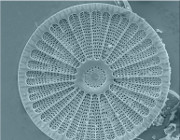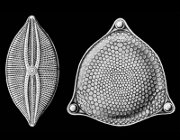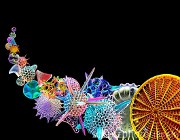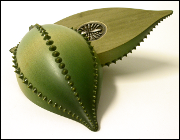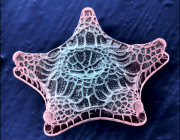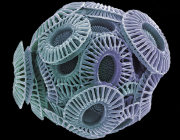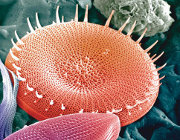Home :: List of Publicly Available Datasets :: Schizochytrium aggregatum ATCC28209
Schizochytrium aggregatum ATCC28209
Downloads:
| Principle Investigator(s) | Jackie Collier |
|---|---|
| External sample ID | Schiz. aggregatum ATCC28209 Spartine detritus |
| NCGR Sample ID | MMETSP0965 |
| Sample accession number | CAM_SMPL_002689 |
| Assembly accession number | CAM_ASM_000507 |
| Combined Assembly Name | Schizochytrium-aggregatum-ATCC28209 |
| Genus | Schizochytrium |
| Species | aggregatum |
| Strain | ATCC28209 |
| Clonal | Yes |
| Axenic | Yes |
| Prelim. NCBI Taxon ID | 4773 |
| 18S rRNA | |
| Importance of organism and transcriptomes | The labyrinthulomycetes (including labyrinthulids, oblongichytrids, thraustochytrids, and aplanochytrids) are ubiquitous, diverse, and abundant marine protists (e.g. Collado Mercado et al. 2010 and references therein). They are thought to live mainly as saprobes, obtaining their nutrition from non-living particulate organic matter (POM) of algal, higher plant, or animal origin. Thus, while labyrinthulomycetes are not fungi in a taxonomic sense, they function as fungi in an ecological sense, likely playing important roles in the decomposition of marine POM. Among the labyrinthulomycetes, Schizochytrium aggregatum ATCC28209 was among the first described in detail, is thought to be cosmopolitan, and is probably the best studied. Schizochytrium aggregatum has specifically been shown to degrade cellulose (Bremer and Talbot 1995) and so may be particularly well-suited to growth on refractory material of terrestrial origin, and provide a conduit for this material into marine food webs. |
| Additional citations and references | Collado Mercado, E., Radway, J. C. & Collier, J. L. 2010. Novel uncultivated labyrinthulomycetes revealed by 18S rDNA sequences from seawater and sediment samples. Aquatic Microbial Ecology 58:215-28. Bremer, G. B. & Talbot, G. 1995. Cellulolytic enzyme activity in the marine protist Schizochytrium aggregatum. Botanica Marina 38:37-41. |
| Environmental Data | |
| Primary citation for organism's characterization, if available | Goldstein, S. & Belsky, M. 1964. Axenic culture studies of a new marine phycomycete possessing an unusual type of asexual reproduction. American Journal of Botany 51:72-78 |
| Latitude | 8 |
| Longitude | 53 |
| Collection date | 15-JUL-63 |
| Sample collection site | North Sea |
| Sample material (e.g. "seawater," "sediment," etc.) | Seawater |
| ENVO term for habitat - primary term | Acquatic: marine |
| ENVO term for habitat - secondary term | Other |
| Habitat description | Seawater off West Germany |
| Other environmental metadata available | none available |
| Other environmental metadata available | none available |
| Habitat | marine habitat |
| Country | GERMANY |
| Experimental Data | |
| Date of experiment | 10-JUN-12 |
| Growth medium | artificial seawater with 0.125% Spartina detritus(0.8% agar plates) |
| Modifications to growth medium | artificial seawater (25 grams per liter Instant Ocean), dried and ground Spartina (0.125% wt:vol), solidified 0.8% agar |
| Temperature (ºC) | 23 |
| Salinty (psu) | 25 |
| pH | 8 |
| Pressure (atm) | 1 |
| Investigation type | Eukaryotes |
| Other experimental metadata available | Harvested 565 mg (wet weight) biomass from 50 plates after 29 days of growth |

